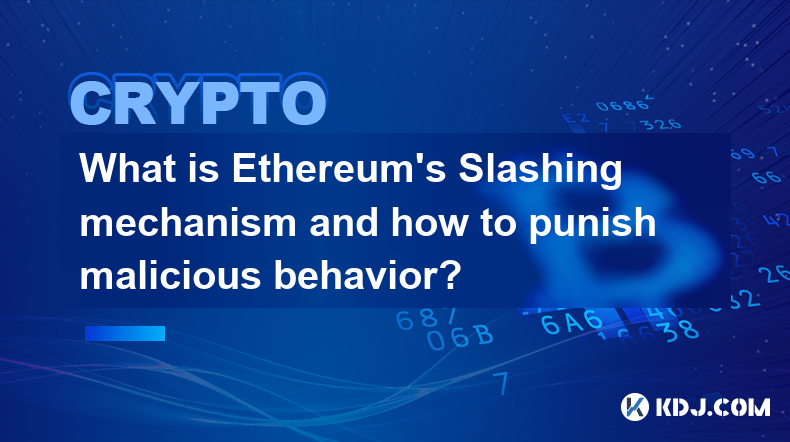-
 Bitcoin
Bitcoin $81,801.3998
-4.88% -
 Ethereum
Ethereum $1,783.4899
-5.99% -
 Tether USDt
Tether USDt $0.9995
0.00% -
 XRP
XRP $2.0414
-4.17% -
 BNB
BNB $587.6986
-2.45% -
 USDC
USDC $0.9999
0.03% -
 Solana
Solana $115.2385
-10.95% -
 Dogecoin
Dogecoin $0.1582
-8.40% -
 Cardano
Cardano $0.6402
-6.21% -
 TRON
TRON $0.2358
-0.95% -
 Toncoin
Toncoin $3.5762
-9.76% -
 UNUS SED LEO
UNUS SED LEO $9.3946
-0.30% -
 Chainlink
Chainlink $12.6270
-8.73% -
 Stellar
Stellar $0.2571
-4.44% -
 Avalanche
Avalanche $17.9106
-6.91% -
 Sui
Sui $2.2118
-10.25% -
 Shiba Inu
Shiba Inu $0.0...01214
-3.68% -
 Hedera
Hedera $0.1605
-7.04% -
 Polkadot
Polkadot $4.0102
-2.57% -
 Litecoin
Litecoin $82.1077
-4.40% -
 MANTRA
MANTRA $6.3939
-0.80% -
 Bitcoin Cash
Bitcoin Cash $293.5150
-4.57% -
 Dai
Dai $0.9998
0.02% -
 Bitget Token
Bitget Token $4.4590
-2.70% -
 Ethena USDe
Ethena USDe $0.9994
-0.05% -
 Pi
Pi $0.5769
-14.95% -
 Monero
Monero $209.6337
-5.00% -
 Hyperliquid
Hyperliquid $11.4631
-15.12% -
 Uniswap
Uniswap $5.7471
-7.46% -
 Aptos
Aptos $4.9953
-6.98%
Detailed buying, selling and trading tutorial of EOS coin (with pictures and text)
Before buying, selling, or trading EOS coins, choose a reputable cryptocurrency exchange like OKX, considering factors like trading fees, liquidity, security, and reputation.
Oct 23, 2024 at 08:41 am

Detailed Buying, Selling, and Trading Tutorial of EOS Coin (with Pictures and Text)
Step 1: Choose a Reputable Cryptocurrency Exchange
There are many cryptocurrency exchanges available, each with its own advantages and disadvantages. When choosing an exchange, consider factors such as trading fees, liquidity, security, and reputation.
- Recommended Exchange: OKX
Step 2: Create an Account
Once you have chosen an exchange, create an account by providing your email address, password, and personal information. Verify your account by completing the KYC (Know Your Customer) process.
Step 3: Fund Your Account
To purchase EOS coins, you can either deposit fiat currency (e.g., USD, EUR) or transfer cryptocurrency from another wallet. Follow the instructions provided by the exchange to make a deposit.
Step 4: Buy EOS
Locate the EOS trading pair (e.g., EOS/USDT) and click "Buy." Enter the amount of EOS you wish to purchase and the price you are willing to pay. Click "Place Order" to execute your trade.
Step 5: Sell EOS
To sell EOS, locate the EOS trading pair and click "Sell." Enter the amount of EOS you wish to sell and the price you are willing to accept. Click "Place Order" to execute your trade.
Step 6: Withdraw EOS
If you want to withdraw your EOS coins to a wallet, navigate to the "Withdraw" section of the exchange and select EOS. Enter the wallet address you wish to withdraw to and the amount of EOS you want to transfer. Click "Withdraw" to complete the process.
Additional Tips
- Use a Hardware Wallet: For increased security, consider using a hardware wallet to store your EOS coins offline.
- Set Stop-Loss Orders: Place stop-loss orders to automatically sell your EOS coins if the price falls below a certain level.
- Monitor the Market: Keep yourself updated with the latest EOS news and market trends to make informed trading decisions.
- Practice in a Simulator: Some exchanges offer trading simulators where you can practice trading EOS without risking real funds.
Disclaimer:info@kdj.com
The information provided is not trading advice. kdj.com does not assume any responsibility for any investments made based on the information provided in this article. Cryptocurrencies are highly volatile and it is highly recommended that you invest with caution after thorough research!
If you believe that the content used on this website infringes your copyright, please contact us immediately (info@kdj.com) and we will delete it promptly.
- title: Bitcoin (BTC) Staring Primed to Move a Leg Up as Technical Indicators Remain Bullish: Analyst
- 2025-04-04 04:25:11
- The Truth Behind Crypto Presales – A Good Investment To Turn $300 Into Millions?
- 2025-04-04 04:25:11
- SUI Signals Bullish Reversal: Rally Expected if Price Closes Above This Key Level
- 2025-04-04 04:20:12
- Rexas Finance (RXS) Tokenizes Real-World Assets, Opening New Markets for Crypto Investors
- 2025-04-04 04:20:12
- 5 Crypto Projects That Are Quickly Gaining Attention This April
- 2025-04-04 04:15:11
- Ruvi AI (RUVI) Is Turning Heads as It Promises to Be the Game-Changing Platform for Decentralized AI and Blockchain Integration
- 2025-04-04 04:15:11
Related knowledge

What is Ethereum’s Slashing mechanism and how to punish malicious behavior?
Feb 20,2025 at 03:08am
Key PointsOverview of slashingDifferent types of slashing in EthereumIncentives and consequences of slashingIdentifying and reporting slashed validatorsOngoing discussions and potential improvementsEthereum's Slashing Mechanism: Punishing Malicious BehaviorEthereum's slashing mechanism is an essential tool for ensuring network security and punishing mal...

What is the verifier node of Ethereum and how to become a verifier?
Feb 19,2025 at 06:00pm
The Verifier Node of Ethereum: A Comprehensive GuideKey Points:What is a Verifier Node?How to Become a Verifier NodeResponsibilities and Rewards of a Verifier NodeMinimum Requirements for Becoming a Verifier NodePotential Difficulties in Running a Verifier Node1. What is a Verifier Node?A Verifier Node is an independent entity on the Ethereum network th...

What is Ethereum’s staking, and how to participate and earn money?
Feb 19,2025 at 04:37pm
Key Points:Understanding Ethereum's Staking MechanismSteps to Participate in StakingBenefits and Rewards of StakingSecurity and Risk ConsiderationsTechnical Requirements and Hardware OptionsPotential Challenges and Troubleshooting TipsFAQs on Ethereum StakingWhat is Ethereum's Staking?Proof-of-Stake (PoS) is a consensus mechanism used in blockchain netw...

What is Ethereum’s DAO (Decentralized Autonomous Organization) and how does it work?
Feb 20,2025 at 03:12am
Key PointsDefinition and Structure of a DAOGovernance and Decision-Making in DAOsBenefits and Use Cases of DAOsChallenges and Limitations of DAOsWhat is Ethereum's DAO (Decentralized Autonomous Organization) and How Does It Work?Definition and Structure of a DAOA Decentralized Autonomous Organization (DAO) is an innovative governance and management fram...

What is Ethereum's multi-signature wallet and how to improve security?
Feb 20,2025 at 02:18pm
Key Points:Understanding the Concept of a Multi-Signature WalletBenefits and Drawbacks of Multisig WalletsRequirements for Setting Up a Multisig WalletStep-by-Step Guide to Generating a Multisig WalletImplementing Strategies for Enhanced Security1. Understanding the Concept of a Multi-Signature WalletA multi-signature (multisig) wallet in the Ethereum e...

What is Ethereum's oracle and how to provide data for smart contracts?
Feb 21,2025 at 01:30am
Key Points:Understanding the concept of oracles in EthereumExploring different types of oraclesDetailed guide on how to provide data for smart contractsAddressing potential challenges and considerationsWhat is Ethereum's Oracle?Oracles are crucial components in the Ethereum ecosystem, enabling smart contracts to access real-world data and off-chain even...

What is Ethereum’s Slashing mechanism and how to punish malicious behavior?
Feb 20,2025 at 03:08am
Key PointsOverview of slashingDifferent types of slashing in EthereumIncentives and consequences of slashingIdentifying and reporting slashed validatorsOngoing discussions and potential improvementsEthereum's Slashing Mechanism: Punishing Malicious BehaviorEthereum's slashing mechanism is an essential tool for ensuring network security and punishing mal...

What is the verifier node of Ethereum and how to become a verifier?
Feb 19,2025 at 06:00pm
The Verifier Node of Ethereum: A Comprehensive GuideKey Points:What is a Verifier Node?How to Become a Verifier NodeResponsibilities and Rewards of a Verifier NodeMinimum Requirements for Becoming a Verifier NodePotential Difficulties in Running a Verifier Node1. What is a Verifier Node?A Verifier Node is an independent entity on the Ethereum network th...

What is Ethereum’s staking, and how to participate and earn money?
Feb 19,2025 at 04:37pm
Key Points:Understanding Ethereum's Staking MechanismSteps to Participate in StakingBenefits and Rewards of StakingSecurity and Risk ConsiderationsTechnical Requirements and Hardware OptionsPotential Challenges and Troubleshooting TipsFAQs on Ethereum StakingWhat is Ethereum's Staking?Proof-of-Stake (PoS) is a consensus mechanism used in blockchain netw...

What is Ethereum’s DAO (Decentralized Autonomous Organization) and how does it work?
Feb 20,2025 at 03:12am
Key PointsDefinition and Structure of a DAOGovernance and Decision-Making in DAOsBenefits and Use Cases of DAOsChallenges and Limitations of DAOsWhat is Ethereum's DAO (Decentralized Autonomous Organization) and How Does It Work?Definition and Structure of a DAOA Decentralized Autonomous Organization (DAO) is an innovative governance and management fram...

What is Ethereum's multi-signature wallet and how to improve security?
Feb 20,2025 at 02:18pm
Key Points:Understanding the Concept of a Multi-Signature WalletBenefits and Drawbacks of Multisig WalletsRequirements for Setting Up a Multisig WalletStep-by-Step Guide to Generating a Multisig WalletImplementing Strategies for Enhanced Security1. Understanding the Concept of a Multi-Signature WalletA multi-signature (multisig) wallet in the Ethereum e...

What is Ethereum's oracle and how to provide data for smart contracts?
Feb 21,2025 at 01:30am
Key Points:Understanding the concept of oracles in EthereumExploring different types of oraclesDetailed guide on how to provide data for smart contractsAddressing potential challenges and considerationsWhat is Ethereum's Oracle?Oracles are crucial components in the Ethereum ecosystem, enabling smart contracts to access real-world data and off-chain even...
See all articles






















































































